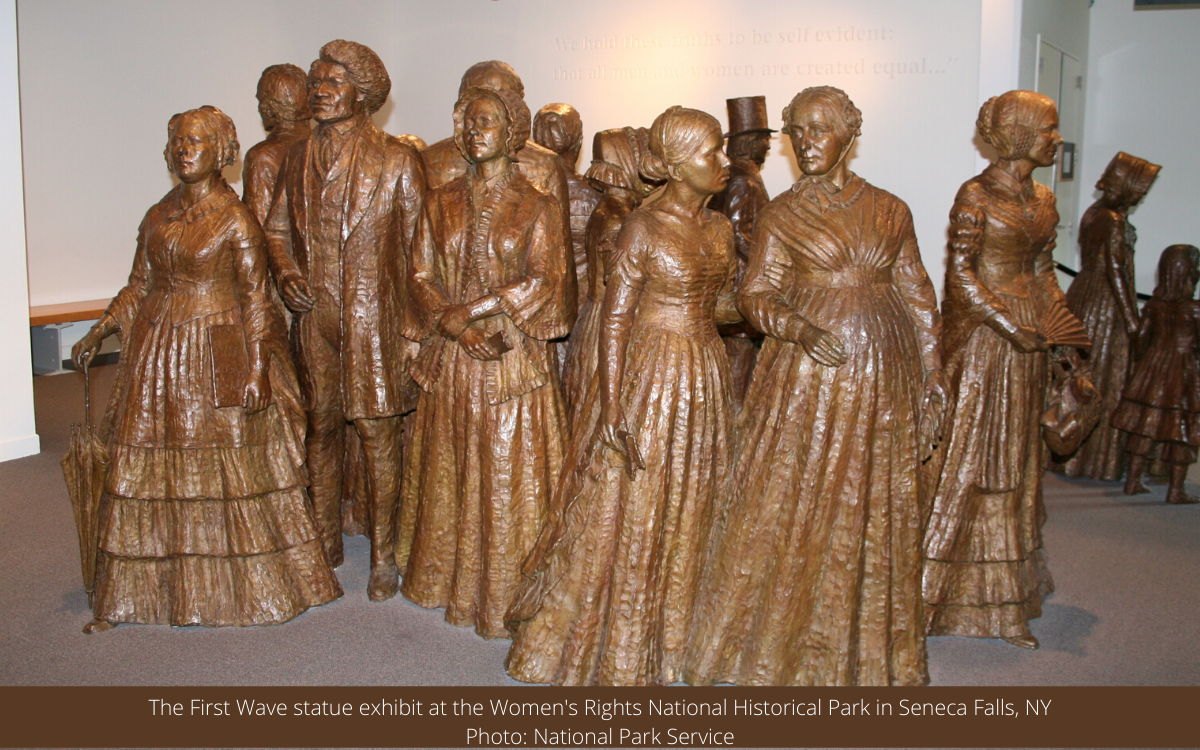March is Women’s History Month. It’s a great time to visit sites across the country that celebrate, honor, and commemorate the historic contributions of women. In keeping with the Sierra Club’s explore, enjoy, and protect spirit, here are eight historic sites you might consider visiting during Women’s History Month.
Women's Rights National Historical Park, Seneca Falls, NY
Visit the site of the 1848 Seneca Falls Convention, the first women’s rights convention, which was attended by social reformers including Elizabeth Cady Stanton, Lucretia Mott, and Frederick Douglass. The convention produced a Declaration of Sentiments which helped spark the national movement for women’s rights. You can stop by the Visitor’s Center for background on the convention, and visit Wesleyan Chapel, where the convention was held. During the month of March, the park is offering daily tours of Elizabeth Cady Stanton’s home.
Rosie the Riveter WWII Home Front National Historical Park, Richmond, CA
Learn more about the important roles women played on the home front during World War II. Richmond was chosen as the site of this historical park due to its four shipyards, which produced 747 ships during the war. The visitor center offers educational and interactive exhibits, while a memorial honors women’s labor during the war. On most Fridays, the park offers visitors a chance to meet real WWII home-front workers.
Harriet Tubman Underground Railroad National Historical Park, Church Creek, MD
The best-known conductor of the Underground Railroad, Harriet Tubman guided more than 70 enslaved people to freedom in the north prior to the Civil War. The visitor center serves as an orientation center and gateway to the larger Harriet Tubman Underground Railroad Scenic Byway. From the visitor center, you can embark on this scenic driving tour to visit some of the sites that were significant to Tubman’s life and her work on the Underground Railroad.
Jane Addams Hull-House Museum, Chicago
This settlement house was cofounded by social reformers Jane Addams and Ellen Gates Star and was designated a National Historic Landmark in 1965. Settlement houses sought to bridge the divide between rich and poor, to share knowledge and culture, and to alleviate poverty. At Hull House, residents lived and worked alongside their immigrant neighbors to create social change on the Near West Side of Chicago. Today, you can visit the museum located in two of the original settlement buildings. It makes connections between the historic work of Addams and other reformers and contemporary issues.
Stonewall National Monument, New York
The site of the 1969 Stonewall Uprising is one of our newest national monuments, recognized by President Obama in 2016. In the early morning of June 28, 1969, police raided Greenwich Village LGBTQ bar the Stonewall Inn, sparking an uprising that helped launch the modern LGBTQ rights movement. Transgender women of color, including Marsha P. Johnson and Sylvia Rivera, played a critical role in the uprising and its aftermath. The national monument is located in Christopher Park, across the street from the Stonewall Inn. The bar is still operational, so consider grabbing a drink to celebrate the role of women in the LGBTQ rights movement.
Little Rock Central High School National Historic Site, Little Rock, AK
Women played an important role in the Civil Rights movement. Little Rock Central High School National Historic Site reminds us of the evils of segregation and honors the bravery of the Little Rock Nine, nine African American students, six of them young women, who integrated the high school in 1957. The students encountered white mobs that sought to prevent them from entering the school. Once inside, they were often subjected to physical and emotional abuse. Start at the visitor center to learn more about the site's historical significance. Call ahead to inquire about scheduled tours of the still-operational high school.
Belmont-Paul Women's Equality National Monument, Washington, DC
This historic house in the nation’s capital served as the headquarters of the National Woman’s Party (NWP) starting in 1929. The NWP helped pass and ratify the 19th Amendment, which granted women the right to vote in 1920. Subsequent campaigns to advance women’s rights included introducing the Equal Rights Amendment in 1923 and securing the inclusion of gender-equality language in the United Nations Charter and 1964 Civil Rights Act. In 2016, following a campaign by advocates, including the Sierra Club, President Obama recognized the site as a national monument. You can visit today to see its extensive collection of art, memorabilia, and exhibits on the NWP and the women’s rights movement.
Georgia O'Keeffe Home and Studio, Abiquiú, New Mexico
Visit this National Historic Landmark that highlights the life and work of Georgia O’Keefe, one of the country’s most celebrated artists. Tours of the home and studio are offered seasonally from March through November. The home, studio, and the cottonwood trees of the nearby Chama River Valley inspired dozens of O’Keeffe paintings. Standard tickets are $45 per person and can be booked in advance online.
Eight sites don’t nearly begin to encompass the many special places that document, celebrate, or highlight women’s contributions to American history. What’d we miss? Share your favorite women’s history sites to visit in the comments.
